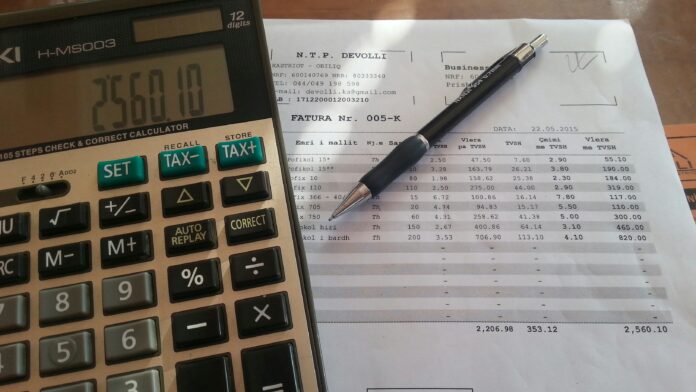Understanding the Importance of Budgeting
Budgeting is a vital component of effective financial management, enabling individuals to gain a comprehensive understanding of their financial status. The primary aim of a budget is to outline a clear framework that details income and expenses, allowing for better control over personal finances. By actively engaging in the budgeting process, one can significantly reduce financial stress, as it provides clarity and organization around day-to-day fiscal responsibilities.
One of the prominent benefits of budgeting is the enhancement of savings. When individuals allocate their income toward essential expenses and savings goals, they create a roadmap that highlights where funds are directed. This targeted approach makes it easier to identify areas where spending might be cut, thereby increasing the potential for savings over time. In essence, a well-structured budget serves as a guide for making informed choices that ultimately lead to improved financial security.
Moreover, budgeting plays a critical role in helping individuals achieve their financial goals. Whether the aim is to save for a vacation, pay down debt, or contribute to retirement, a budget establishes measurable milestones and timelines. This strategic planning fosters accountability, encouraging individuals to remain committed to their financial aspirations. As objectives are reached, the positive reinforcement can lead to enhanced motivation and heightened confidence in managing personal finances.
In summary, the importance of budgeting cannot be overstated. It not only helps in maintaining a balanced financial life but also educates individuals on the art of planning and prioritizing their financial commitments. By making budgeting a priority, one can pave the way toward a more stable and secure financial future.
Popular Budgeting Methods Explained
Effective budgeting is essential for managing personal finances, and understanding various budgeting methods can significantly enhance one’s ability to achieve financial stability. Three popular budgeting methods that have gained traction include the 50/30/20 rule, zero-based budgeting, and the envelope method. Each approach offers distinct mechanics, advantages, and potential drawbacks, which we will explore in detail.
The 50/30/20 rule is a simple and straightforward approach to budgeting. This method divides your income into three categories: 50% for needs (essential expenses such as housing and utilities), 30% for wants (discretionary spending including dining out and entertainment), and 20% for savings or debt repayment. The primary advantage of this method lies in its ease of use, allowing individuals to allocate their income without excessive tracking or complexity. Conversely, a potential drawback is that it may not suit everyone’s financial situation, especially if living expenses are unusually high.
Another popular method is zero-based budgeting, which requires individuals to allocate every dollar of their income, ensuring that total income minus total expenditures equals zero. This method promotes detailed tracking of spending and encourages greater awareness of one’s financial habits. It can be particularly effective for those looking to get serious about saving or debt reduction. However, the challenge of zero-based budgeting lies in its time-intensive nature, as it requires regular monitoring and a steadfast commitment to maintaining a budget.
Lastly, the envelope method takes a more tactile approach by allocating cash into specific envelopes for various spending categories. This method essentially limits spending to the cash available in each envelope, fostering discipline in monetary management. While this method can help curb overspending, its reliance on cash may not be practical in a digital economy where online transactions are prevalent.
When evaluating these methods, individuals should consider their unique financial situations, preferences, and goals to determine which budgeting strategy aligns best with their lifestyle.
Practical Tips for Tracking Income and Expenses
Effective tracking of income and expenses is a cornerstone of successful budgeting. One of the first steps to consider is categorizing your spending. By breaking down expenses into categories such as housing, food, transportation, and entertainment, individuals can obtain a clearer picture of where their money is going. This enables more informed decisions about adjustments that may need to be made to stay within a specified budget.
Additionally, maintaining a spending journal can be highly beneficial. Documenting every transaction—whether it is a large utility bill or a small daily coffee purchase—helps reinforce awareness of financial habits. A traditional notebook or an app can be utilized for this purpose. The key here is consistency; by making it a daily practice, tracking becomes a seamless part of one’s financial routine.
Moreover, digital tools and budgeting apps can enhance the tracking process significantly. Many of these applications offer user-friendly interfaces that automatically categorize expenses and income, providing instant feedback on how an individual is performing relative to their budget goals. Popular options, like Mint or YNAB (You Need a Budget), help in monitoring spending patterns and identifying areas for improvement. These tools also often feature visual graphs, making it easier to digest and analyze financial data at a glance.
Staying disciplined is crucial for effective tracking. Setting aside time for regular reviews of one’s finances, whether weekly or monthly, instills a habit that ensures accountability. During these reviews, one should assess both spending habits and income sources, making adjustments where necessary to align spending with financial goals. With time and practice, these strategies can cultivate a deeper understanding of personal finances, ultimately leading to better budgeting outcomes.
Digital Tools and Apps for Budgeting
In today’s technologically advanced world, numerous digital tools and applications can simplify the budgeting process, making it easy for individuals to manage their finances more effectively. Various budgeting software solutions cater to different needs, from basic expense tracking to comprehensive financial planning. Among the most popular tools are Mint, YNAB (You Need A Budget), and EveryDollar. Each of these platforms offers unique features designed to assist users in adhering to their budgetary goals.
Mint is known for its user-friendly interface and automatic syncing with bank accounts. This app provides users with a holistic view of their finances, effortlessly tracking income, expenditures, and investments. Additionally, Mint offers budgeting categories and alerts for bill payments, which can help prevent overspending and missed payments. For those seeking proactive financial management, YNAB offers a more hands-on approach. Its methodology encourages users to assign every dollar a specific purpose, fostering an intentional allocation of funds. This system not only helps users track spending but also emphasizes the importance of establishing savings goals and preparing for future expenses.
Another suitable option is EveryDollar, an app that focuses on zero-based budgeting. Similar to YNAB, this application guides users to plan their monthly income down to zero, ensuring that every dollar is accounted for. Its simple, drag-and-drop interface allows individuals to adjust their budget as their financial circumstances change. When selecting the right budgeting tool, it is essential to consider personal preferences, usability, and specific features that align with one’s financial goals.
Additionally, integrating technology into budgeting efforts can enhance adherence to financial plans. For instance, setting recurring reminders or utilizing the app’s goal-setting features can bolster financial discipline. Ultimately, the right digital tool can transform budgeting from a tedious task into a streamlined process, enabling users to maintain better control over their financial well-being.


